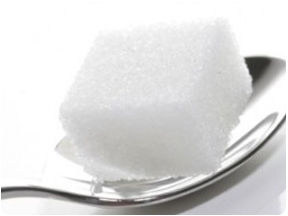Hypoglycemia
Low Blood Sugar Protocol
Hypoglycemia is a complex set of symptoms caused by faulty carbohydrate metabolism. It’s also synonymous with low blood sugar. Normally, the body maintains blood sugar levels within a narrow range through the coordinated effort of several glands and their hormones. If these hormones, especially glucagon (from glucose) and insulin (produced in the pancreas), are thrown out of balance, hypoglycemia or type-2 diabetes can result.

Hypoglycemia (in people not taking insulin) is usually the result of consuming too many simple carbohydrates (sugars). “Syndrome X” describes a cluster of abnormalities that owe their existence largely to a high intake of refined carbohydrates leading to the development of hypoglycemia, excessive insulin secretion, and glucose intolerance. This condition is followed by decreased insulin sensitivity, elevated cholesterol levels, obesity, high blood pressure, and type-2 diabetes.
Numerous studies have demonstrated that depressed individuals have faulty glucose/insulin regulatory mechanisms. Other studies have clearly shown the relationship between low blood sugar and decreased mental acuity. Hypoglycemia has also been implicated as a major trigger for migraine headaches.
Hypoglycemia Diet
The following foods are not recommended for anyone with hypoglycemia or hypoadrenia tendencies: table sugar, maltose, honey, sucrose (fruit sugar), bananas, raisins, dates, fruit juices, apricots, beets, white flour, white potatoes, white rice, cooked corn, corn flakes, and cereals.
It’s best to combine protein, fat, and carbohydrate in each snack or meal. Avoiding simple sugars and consuming a balanced diet help stabilize blood sugar levels. Eating healthy snacks throughout the day can also help keep your blood sugar levels stable. One simple snack that combines protein, fat, and carbohydrate is a handful of nuts (such as cashews, almonds, walnuts, or pecans) along with an apple, pear, or whole wheat crackers.
Supplements to Combat Hypoglycemia
If you’re following my advice above, taking the CFS/Fibromyalgia Formula, adrenal cortex, drinking 70 ounces of water, avoiding simple sugars, and not skipping meals, you’ll probably not need any of the following supplements.
• Chromium is a trace mineral that helps reduce glucose-induced insulin secretion. Chromium works with insulin to facilitate the uptake of glucose into the cells. Glucose levels remain elevated in the absence of chromium. A normal dose is 200 mcg. Taken 30 minutes before or after meals, two–three times daily.
• Vitamin B3 (niacin) helps regulate blood sugar levels and may help alleviate the symptoms of hypoglycemia. This should be in your multivitamin and mineral formula.
• Magnesium levels must be sufficient in order to avoid hypoglycemic reactions. This should be in your multivitamin and mineral formula.
• Zinc levels must be sufficient in order to avoid hypoglycemic reactions. This should be in your multivitamin and mineral formula.
• L-Glutamine, an amino acid, helps regulate blood sugar levels. I’ve found it to be very effective in eliminating sugar cravings and hypoglycemic episodes. A normal dose is 500–1,000 mg. once or twice daily on an empty stomach.
• Gymnema sylvester is a climbing plant found in Asia and Africa. It’s used in Ayruvedic medicine, an indigenous healing practice from India, for the treatment of type-2 diabetes. Scientific studies have shown this herb to be a valuable addition in preventing the symptoms of hypoglycemia. It’s also routinely used to reduce sugar cravings.
If you’d like to know more about our office or protocols please feel free to give us a call (M-F, 8-4 PM CST) Toll free 1-888-884-9577. Please visit our site www.treatingandbeating.com.







